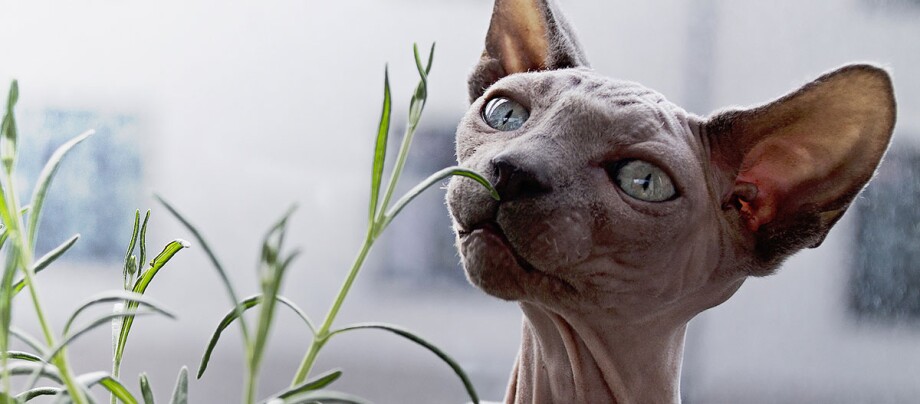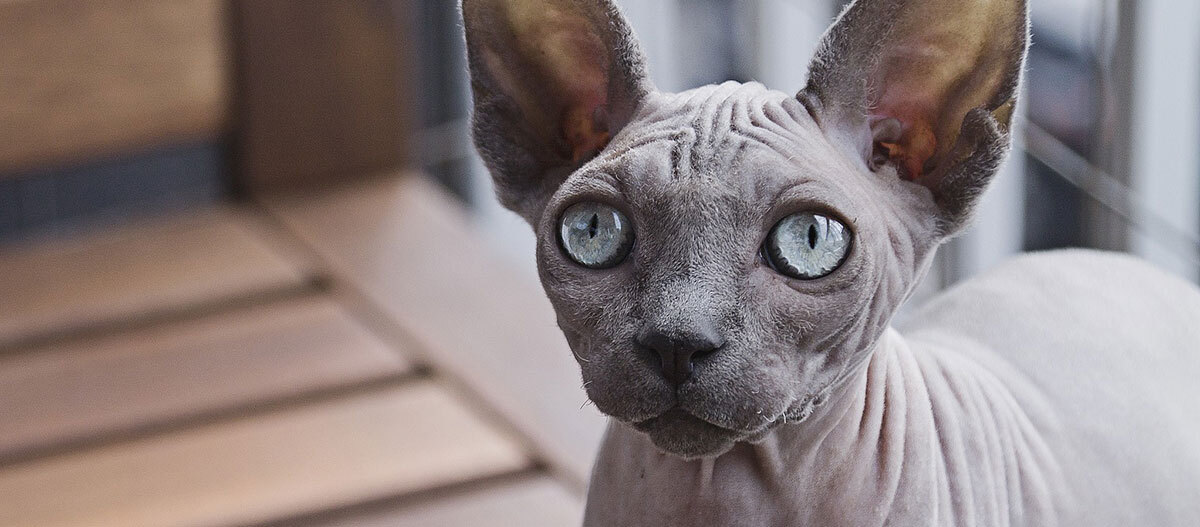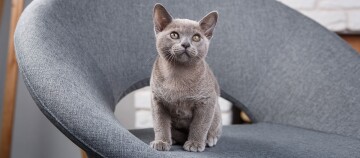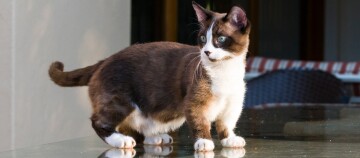Sphynx Cat - Striking and One of the Most Affectionate Cat Breeds There Is
01.01.2024 - Reading time: 4 minutes

A Sphynx cat immediately catches the eye of every visitor – they are completely lacking the fluffy coat that distinguishes most cats. Instead, their skin is covered only with light fuzz. Nevertheless, this hairless cat is enjoying more popularity than ever before!
NewsletterSphynx Cat
Breed | Sphynx Cat
|
Origin | Canada |
Size | medium |
Weight | 3.5 kg - 7 kg (female and male)
|
Eyes | all colours
|
Hair | hairless, only slight down fluff on the entire body
|
Colour | all colours
|
Nature | affectionate, loving, self-confident, intelligent
|
Owning and caring | domestic cat, as it has hardly any protection against the weather due to lack of fur.
|
Accessories | plenty of food, special sun cream, heat lamps
|
Origin and breeding
Originally, the Sphynx was the result of a mutation of a kitten from an ordinary domestic cat – but its special appearance instantly inspired breeders worldwide. It is said that the early Aztecs already kept hairless cats, and researchers also think they can recognise possible ancestors of the Sphynx cat in some early 20th century portraits. But only since the birth of the hairless kitten in 1966 has it become official: not every cat has fur! Just a few years later in 1971, the Sphynx was recognised as a cat breed. To this day, it is bred all over the world, but in Germany, there are very strict regulations: As torture breeding is prohibited here, a bred Sphynx must meet special criteria. In Germany, if, for example, the whiskers are missing, it is already considered to be torture breeding, as these represent an essential sensory organ of the animal, which it is deprived of only by breeding.
Hard to miss: the appearance of the Sphynx cat
Apart from its hairlessness, the Sphynx has several other visual characteristics that make it an absolutely charming cat. It is delicate and graceful. The legs are of medium length, the hind legs slightly longer than the front legs. Due to the strong chin, angular pointed head and the large, lemon shaped eyes, it may look somewhat stern at first glance. The ears are large and pointed. It does not necessarily have to be monochrome: some species have dark, large spots all over their body or are otherwise patterned. The variety of eye colour also leaves room for breeders, so every Sphynx cat looks slightly different. By the way: wrinkles are desirable in the Sphynx – especially between the ears and on the neck.

The Sphynx cat: character and care
The Sphynx is one of the most affectionate cat breeds there is. It likes to fixate on one person and can then become extremely affectionate. At the same time, it is very intelligent and likes to be challenged by demanding toys. It loves warmth: therefore, if possible, you should offer it a sunny windowsill or similar where it can let the sun shine on its belly. Loneliness is not good for a social kitten. In general, solitary confinement is not recommended unless the cat is extremely incompatible or chronically ill. So if you get a cat or are thinking of getting one, it’s best to get two of the cuddle cats at the same time.
The Sphynx requires very little care; it only needs to be ensured that it does not cool down. Therefore, it should always be able to stay indoors in well-heated rooms. If it lies in the sun for a long time, you can protect the skin with a special sun cream. A heat lamp also helps, especially in winter. Cold draughts or strongly air-conditioned rooms are not for the Sphynx cat: it can quickly become ill there.
Important: Due to the lack of fur, the cat loses body heat more quickly, which it compensates by consuming more energy. Therefore, it needs a little more food than its fluffy colleagues.
Important note on the cultivated breed
Hairless cats have no functional vibrissae on the head or body. As tactile hairs are an essential sensory organ for the cat, their absence or their transformation leading to non-functionality is to be considered as a trait of torture breeding.
The tactile hairs are particularly important for orientation in the dark, as well as also for catching and scanning prey, examining objects and establishing social contacts. The BMELV report recommends a breeding ban for cats without tactile hairs.





